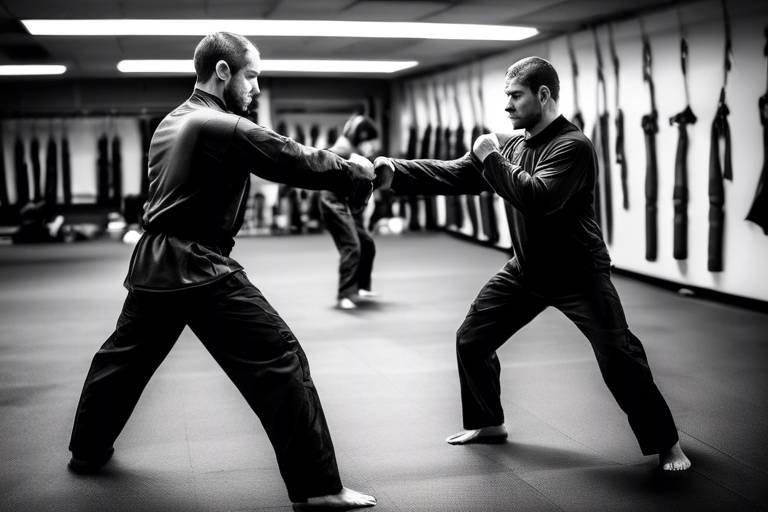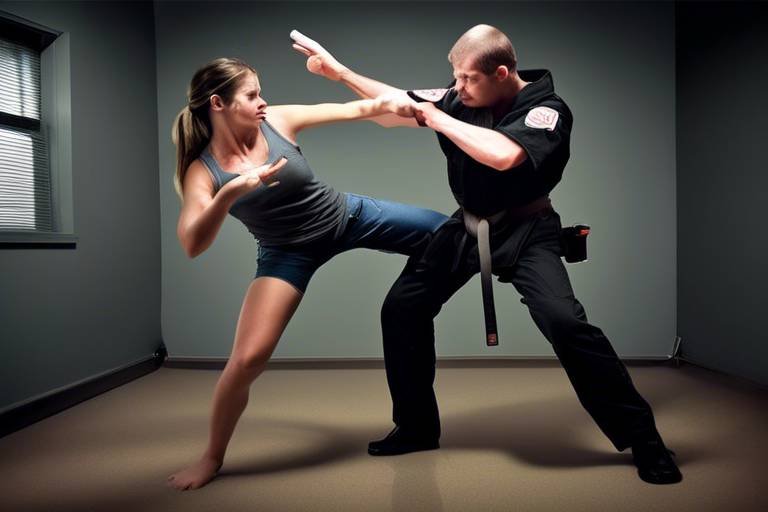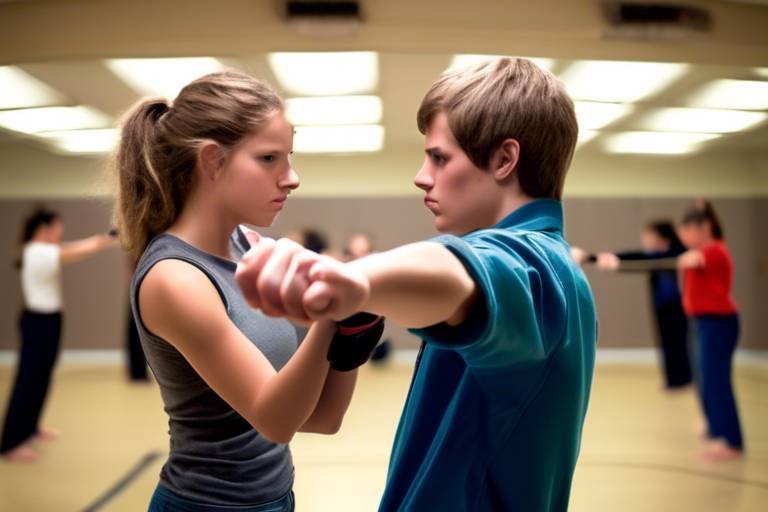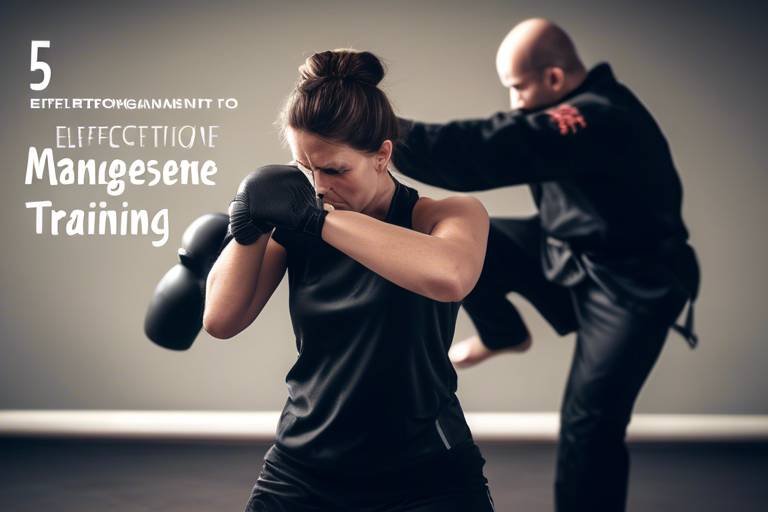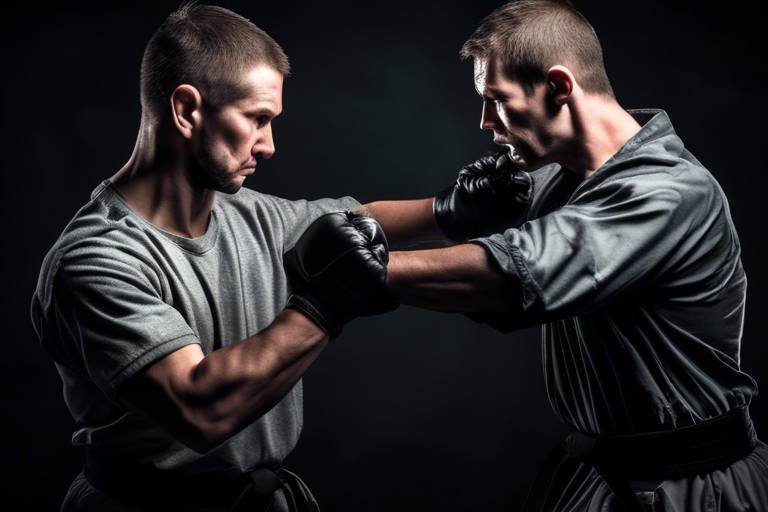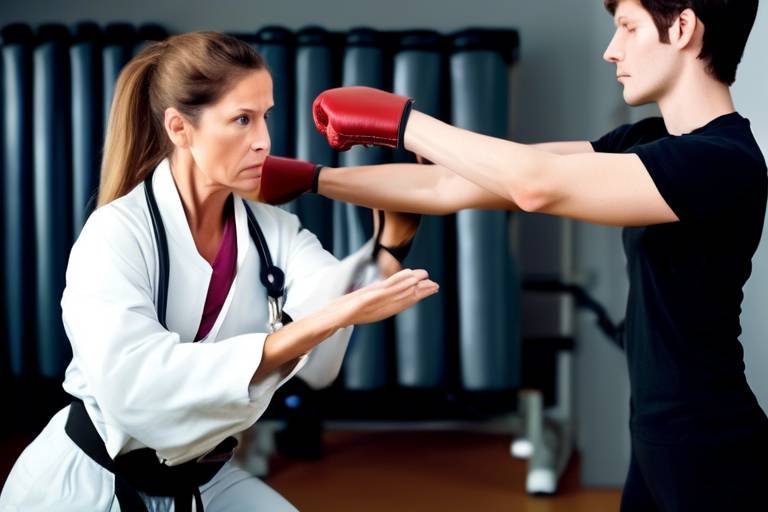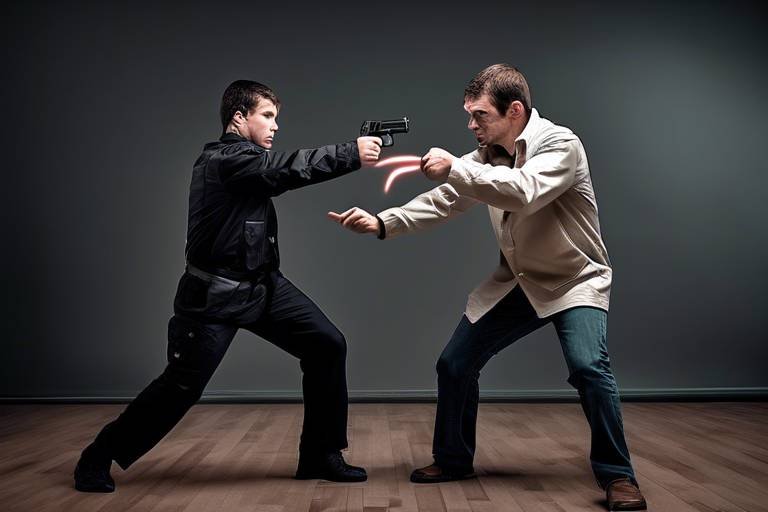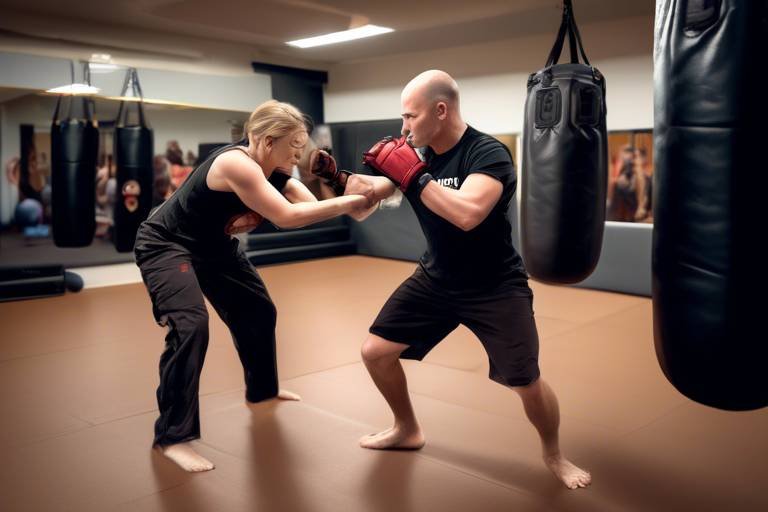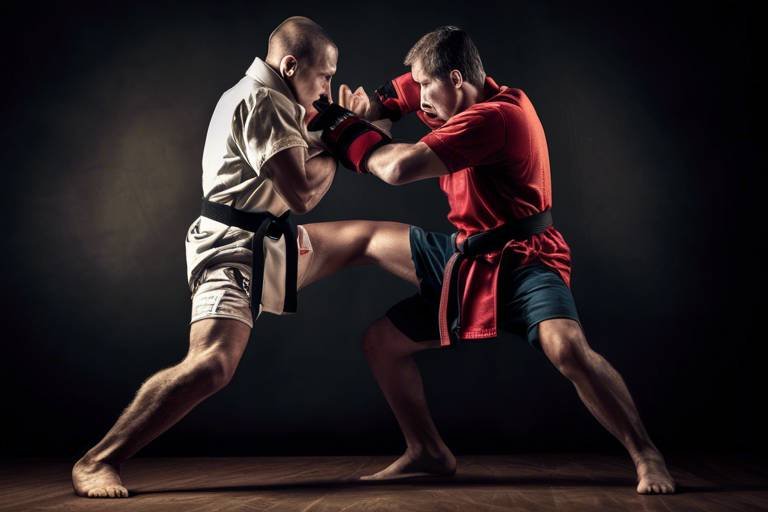How to Use Your Voice as an Effective Self-Defense Technique?
In a world where personal safety is paramount, many people overlook one of their most powerful tools: their voice. Yes, you heard that right! Your voice can be a formidable ally when it comes to self-defense. Imagine walking down a dimly lit street, and suddenly you feel a presence behind you. Instead of panicking, you turn around and project a strong, confident "Back off!" This simple act can not only deter an aggressor but also empower you in a moment of fear. In this article, we will explore how to harness the power of your voice to enhance your self-defense skills. From vocal projection to assertive communication, we’ll cover everything you need to know to make your voice a key player in your safety strategy.
Vocal projection is like the megaphone of your personal safety toolkit. When you project your voice, you’re not just making noise; you’re sending a clear message that you mean business. Think about it: if you were to whisper "Help!" in a crowded place, would anyone really take you seriously? Probably not. But if you shout it with authority, people are likely to respond. In this section, we’ll delve into techniques that can help you enhance your vocal strength and clarity. Techniques such as proper posture, diaphragmatic breathing, and vocal exercises can significantly improve how your voice carries. By practicing these techniques, you can ensure that your voice becomes a formidable tool in any threatening situation.
Did you know that the tone and intensity of your voice can either command respect or invite dismissal? It’s true! When you adjust your vocal qualities, you can convey authority and confidence. For instance, a low, steady tone can project calmness and control, while a higher pitch might express fear or uncertainty. In self-defense scenarios, you want to avoid sounding fearful. Instead, practice speaking in a firm, steady tone. This doesn’t mean you have to yell; rather, it’s about finding that sweet spot where your voice resonates with strength. By mastering the art of tone and intensity, you can effectively assert yourself in potentially dangerous situations.
Assertive communication is not just about what you say, but how you say it. When you express your needs and boundaries clearly, you establish control over the situation. Imagine being confronted by an aggressive individual and saying, "I don’t want any trouble. Please step back." This statement is clear, direct, and leaves little room for misinterpretation. In this section, we will cover strategies to help you express yourself assertively. Remember, using your voice to set boundaries is a crucial self-defense technique. It’s about being firm yet respectful, ensuring that your message is heard loud and clear.
Commands can be incredibly powerful in self-defense scenarios. Using concise, clear commands can communicate urgency and assertiveness, making it harder for an aggressor to dismiss your words. For example, shouting "Stop!" or "Leave me alone!" can catch someone off guard and give you the upper hand. The key is to keep your commands short and impactful. In moments of danger, every second counts, and a well-timed command can make all the difference. By practicing these commands, you’ll be prepared to respond effectively when it matters most.
Engaging in role-playing can be a fun and effective way to practice using your voice in various situations. Imagine simulating a scenario where someone approaches you aggressively. How would you respond? By practicing these scenarios with a friend or family member, you can refine your vocal techniques and become more comfortable asserting yourself. This type of practice not only builds confidence but also helps you react instinctively when faced with real-life situations. After all, the more you practice, the more natural it will feel to use your voice as a self-defense tool.
Did you know that proper breathing techniques can enhance both your vocal power and your calmness? When faced with a threatening situation, our bodies can go into fight-or-flight mode, causing our breathing to quicken and our voices to shake. By practicing deep breathing exercises, you can maintain composure and project confidence when using your voice in self-defense. Techniques such as inhaling deeply through your nose and exhaling slowly through your mouth can help ground you. This controlled breathing not only steadies your voice but also reduces anxiety, allowing you to respond effectively.
Confidence is key to using your voice effectively. The more you practice, the more natural it becomes to assert yourself vocally. Regular practice can involve everything from vocal exercises to role-playing scenarios. Self-reflection is also crucial; take time to analyze your progress and identify areas for improvement. Remember, building confidence is a journey, and with each step, you’ll find yourself becoming more empowered to use your voice as a self-defense technique. It’s all about creating a habit of assertiveness that translates into real-life situations.
Learning from real-life examples can be incredibly inspiring. There are countless stories of individuals who effectively used their voices in self-defense. For instance, one woman recounted a time when she was approached by a stranger in a parking lot. Instead of staying silent, she shouted a clear command, "Back off!" This not only startled the aggressor but also attracted the attention of nearby individuals, leading to her safety. These success stories demonstrate the practical applications of vocal techniques and reinforce the idea that your voice can indeed be a powerful tool for self-defense.
- Can using my voice really deter an attacker? Absolutely! A strong, confident voice can catch an aggressor off guard and attract help.
- What if I feel too scared to use my voice? It’s normal to feel scared. Practicing assertive communication can help build your confidence over time.
- Are there specific exercises to improve my vocal projection? Yes! Techniques like diaphragmatic breathing and vocal warm-ups can enhance your vocal strength.
- How can I practice assertive communication? Role-playing scenarios with friends or family can be an effective way to practice.

The Importance of Vocal Projection
When it comes to self-defense, many people might think of physical techniques or martial arts skills. However, one of the most powerful tools at your disposal is your voice. Vocal projection is not just about how loud you can shout; it's about how your voice conveys authority, confidence, and urgency. Imagine walking down a dimly lit street and sensing someone following you. Instead of panicking, what if you could project your voice with such clarity and strength that it instantly deterred any potential threat? That’s the power of vocal projection.
To enhance your vocal strength, consider the following techniques:
- Posture: Stand tall and maintain an open posture. This not only helps you breathe better but also gives an impression of confidence.
- Breath Control: Deep breathing from your diaphragm can significantly improve your vocal power. Practice inhaling deeply and exhaling fully before speaking.
- Warm-Up Exercises: Just like athletes warm up their muscles, vocal exercises can prepare your voice for effective communication. Try humming or vocalizing scales to get your vocal cords ready.
Vocal projection can significantly impact how your message is received. When you speak clearly and assertively, you are less likely to be dismissed or ignored. Think about how you feel when someone speaks to you in a loud, confident voice compared to a soft, hesitant one. The former commands attention and respect, while the latter may be easily overlooked. This is crucial in self-defense situations where your voice needs to be heard and taken seriously.
Moreover, the ability to project your voice effectively can create a psychological barrier against aggressors. When you assert yourself with a strong voice, it sends a message: I am not afraid, and I will not be an easy target. This confidence can often be enough to deter someone from approaching you. Remember, many attackers look for easy targets; if you present yourself as someone who is aware and ready to defend, they may think twice.
In essence, vocal projection is about more than just volume; it’s about clarity, authority, and the ability to communicate urgency. By mastering these techniques, you can transform your voice into a powerful self-defense tool, capable of protecting you in potentially dangerous situations.

When it comes to using your voice as an effective self-defense technique, understanding tone and intensity is crucial. Your voice is not just a means of communication; it's a powerful tool that can convey authority, confidence, and even urgency. Imagine standing your ground against a potential threat. The way you say something can be just as important as what you say. For instance, if you project a steady, strong tone, it can signal to an aggressor that you are not someone to be trifled with. It’s like the difference between a gentle breeze and a raging storm—one can easily be ignored, while the other commands attention.
To effectively use your voice in self-defense, consider the following aspects of tone and intensity:
- Volume: Speaking loudly enough to be heard can deter an aggressor. A strong volume can make your words seem more powerful and urgent.
- Pitch: A lower pitch often conveys authority and confidence, while a higher pitch can sometimes indicate fear or uncertainty. Adjusting your pitch can help you project strength.
- Speed: Speaking slowly and clearly can enhance the clarity of your message, making it easier for others to understand your commands. Rapid speech might suggest panic.
Think about how you respond to different tones in everyday life. When someone speaks with a commanding tone, you naturally pay more attention, right? This is because tone has the power to influence emotions and perceptions. For example, if you encounter a situation where you feel threatened, using a firm tone can make a significant difference. Instead of sounding unsure or timid, a confident tone can assert your presence and deter an aggressor from approaching you.
Additionally, intensity plays a vital role in how your voice is perceived. By varying the intensity of your voice—whether it’s softening it to convey calmness or raising it to express urgency—you can effectively communicate your emotional state and intentions. This is particularly important in self-defense situations, where you might need to escalate your vocal intensity to convey the seriousness of your situation.
To practice these techniques, consider recording yourself speaking in different tones and intensities. Play it back and listen critically to how each variation affects the message. You might be surprised at how much your vocal qualities can transform your communication style. It’s like tuning a musical instrument; the right adjustments can create a harmonious and powerful sound that resonates with those around you.
Ultimately, mastering tone and intensity is about being aware of how your voice can influence others. When you harness this power, you not only enhance your self-defense skills but also empower yourself in everyday situations. So, the next time you find yourself in a potentially dangerous scenario, remember that your voice is not just a tool for communication—it can be your strongest ally.
Q: How can I practice my vocal projection effectively?
A: You can practice vocal projection by reading aloud in front of a mirror, focusing on your volume and clarity. Recording yourself can also help you identify areas for improvement.
Q: What should I do if I feel scared to use my voice in a threatening situation?
A: It's natural to feel scared, but practicing assertive communication and role-playing scenarios with friends can help build your confidence over time.
Q: Can tone and intensity really make a difference in self-defense?
A: Absolutely! A strong, confident tone can deter aggressors and help you assert your boundaries effectively.

When it comes to self-defense, the ability to communicate assertively can be just as crucial as physical techniques. Assertive communication is all about expressing your thoughts, feelings, and needs clearly and confidently, without being aggressive or passive. Imagine you're in a situation where someone is invading your personal space or making you feel uncomfortable. Wouldn’t it be empowering to know that your voice alone could deter a potential threat? This is where practicing assertive communication comes into play.
To start, it's essential to understand that assertiveness is not just about the words you choose but also how you deliver them. Your body language, facial expressions, and, most importantly, your tone of voice all contribute to how your message is perceived. A confident posture, direct eye contact, and a strong, steady voice can make a world of difference. Think of your voice as a tool; when wielded properly, it can be a powerful weapon against intimidation.
Here are some key strategies to enhance your assertive communication skills:
- Be Direct: Use clear and straightforward language. Avoid beating around the bush or using vague terms. For instance, instead of saying, "I would prefer if you didn't come so close," try "Please step back." This leaves no room for misinterpretation.
- Use "I" Statements: Frame your thoughts using "I" statements to express how you feel. For example, "I feel uncomfortable when you stand too close" instead of "You are making me uncomfortable." This approach not only conveys your feelings but also takes ownership of them.
- Maintain Calmness: Keeping your voice steady and calm can help convey confidence. If you feel your heart racing or your voice wavering, take a moment to breathe deeply before responding. This can help you regain control and project authority.
Another important aspect of practicing assertive communication is setting boundaries. It's essential to communicate your limits clearly and firmly. For instance, if someone is making unwanted advances, saying something like, "I do not appreciate that behavior, and I need you to stop," asserts your boundaries effectively. Remember, your voice is your first line of defense; using it assertively can prevent situations from escalating.
Role-playing is a fantastic way to practice these skills. Gather a friend or family member and simulate various scenarios where you might need to use assertive communication. This not only helps you become more comfortable with your voice but also prepares you for real-life situations. By rehearsing these interactions, you can build muscle memory that will kick in when you need it most.
Lastly, don't forget to reflect on your experiences. After a situation where you had to assert yourself, take some time to think about what went well and what could be improved. This self-reflection is crucial for building confidence and refining your communication skills. Just like any other skill, the more you practice assertive communication, the more natural it will become.
Q: What if I feel too nervous to use my voice in a threatening situation?
A: It's completely normal to feel nervous. Practicing assertive communication in low-pressure environments can help build your confidence. Start small, and gradually work your way up to more challenging scenarios.
Q: Can assertive communication really deter an aggressor?
A: Yes! A strong, assertive voice can convey confidence and authority, which may make an aggressor think twice. It's about projecting strength and clarity in your message.
Q: How can I practice assertive communication on my own?
A: You can practice in front of a mirror, record yourself speaking, or even use role-playing apps designed for self-defense training. The key is to become comfortable with your voice and how you express yourself.

Using Commands Effectively
When it comes to self-defense, the way you use your voice can make all the difference. is a powerful technique that can help you assert control in a threatening situation. Imagine being in a dark alley and suddenly feeling that someone is following you. Your instinct might be to run, but what if you could turn around and use your voice as a shield? By issuing clear and concise commands, you can not only deter an aggressor but also empower yourself.
To make your commands impactful, you need to focus on a few key elements. First, clarity is crucial. When you shout a command, it should be unmistakable. Phrases like "Stop!", "Back off!", or "Leave me alone!" are direct and leave no room for misinterpretation. The more straightforward your command, the less likely it is that an aggressor will dismiss it as a mere suggestion.
Next, consider your tone and volume. The way you deliver your command can significantly influence its effectiveness. A loud, firm voice conveys authority and confidence, while a shaky or quiet voice may invite further aggression. Practice projecting your voice from your diaphragm rather than your throat; this not only helps with volume but also adds a layer of strength to your words. Just like a lion's roar can command attention in the wild, your voice can do the same in a moment of crisis.
Another essential aspect is the urgency of your command. When you feel threatened, your body goes into fight-or-flight mode, and your voice should reflect that urgency. Use short, sharp commands that are easy to remember and deliver. For example, instead of saying, "Could you please step back?" you might say, "Step back now!" This urgency can create a moment of hesitation in the aggressor, giving you a chance to escape or seek help.
To further enhance your command delivery, you might consider practicing in front of a mirror or with a friend. Role-playing can be an effective way to simulate real-life scenarios where you might need to use your voice assertively. You can experiment with different tones, volumes, and phrases to see what feels most comfortable and powerful for you. Remember, the goal is to make your commands sound as natural as possible while still being assertive.
In summary, using commands effectively is about more than just the words you choose; it encompasses clarity, tone, urgency, and practice. By honing these aspects, you can transform your voice into a formidable tool for self-defense. So, the next time you find yourself in a potentially dangerous situation, remember that your voice can be just as powerful as any physical defense technique.
- What are some effective commands to use in self-defense? Simple and direct commands like "Stop!", "Back off!", or "Help!" are most effective.
- How can I improve my vocal projection? Practice breathing exercises and speak from your diaphragm to enhance your vocal strength.
- Is it necessary to practice using commands? Yes, regular practice can build confidence and make your commands sound more natural in high-pressure situations.
- Can I use my voice in non-threatening situations? Absolutely! Assertive communication is beneficial in everyday interactions as well.

Role-Playing Scenarios
Role-playing scenarios are an incredibly effective way to hone your vocal self-defense skills. Imagine this: you're walking down a quiet street when suddenly someone approaches you with an aggressive demeanor. Your heart races, and your mind goes blank. But what if you had practiced this situation beforehand? Role-playing allows you to simulate real-life encounters, giving you the chance to experiment with different vocal techniques in a safe environment. By acting out these scenarios, you can learn how to react instinctively and confidently when it really matters.
One effective method is to partner with a friend or a group and take turns playing the role of both the aggressor and the defender. This not only helps you understand the perspective of the person you might be confronting but also allows you to test the effectiveness of your vocal strategies. For instance, try using strong, clear commands like “Back off!” or “Leave me alone!” and see how they resonate in different tones and intensities. You might be surprised at how much the delivery can change the impact of your words.
Here are a few scenarios you can practice:
- Scenario 1: You're at a bus stop, and someone starts to invade your personal space. Practice projecting your voice to assert your boundaries.
- Scenario 2: You're in a crowded place, and someone attempts to grab your belongings. Use concise commands to alert those around you.
- Scenario 3: You're approached by a stranger asking for help in a way that feels uncomfortable. Role-play how to firmly decline while maintaining your composure.
In each of these scenarios, focus on your body language as well. Stand tall, make eye contact, and use your voice to convey confidence. Remember, the goal is not just to practice the words you say, but to embody the assertiveness that comes with them. The more you engage in these role-playing exercises, the more natural it will feel to use your voice as a tool for self-defense.
Additionally, consider recording your practice sessions. Listening to your vocal delivery can provide valuable insights into areas for improvement. Are you speaking too softly? Is your tone lacking authority? Self-reflection after each role-play can lead to significant growth in your vocal skills.
Ultimately, role-playing scenarios are about building muscle memory. Just as athletes practice their moves repeatedly, you too can train your voice to respond effectively in high-pressure situations. So gather your friends, set the stage, and start practicing. Your voice can be a powerful ally in ensuring your safety!
Q1: How often should I practice role-playing scenarios?
A1: Aim for at least once a week to keep your skills sharp and to build confidence over time.
Q2: Can I practice alone?
A2: Yes! You can practice in front of a mirror or record yourself to analyze your vocal delivery and body language.
Q3: What if I feel silly doing role-plays?
A3: It’s completely normal to feel a bit awkward at first. Remember, the goal is to prepare yourself for real situations, and practice makes perfect!

Breathing Techniques for Control
When it comes to self-defense, many people often overlook the profound impact of breathing techniques. You might be wondering, "How can something as simple as breathing help me in a threatening situation?" Well, the answer lies in the connection between your breath and your overall state of mind. Proper breathing can not only enhance your vocal power but also help you maintain composure when faced with danger. Think of your breath as a control knob for your emotions; by mastering it, you can dial down anxiety and dial up confidence.
One effective technique to consider is the diaphragmatic breathing method, which involves breathing deeply from your diaphragm rather than shallowly from your chest. This technique not only improves oxygen flow to your brain but also helps in calming your nerves. To practice this, find a comfortable position, either sitting or standing. Inhale deeply through your nose, allowing your belly to expand fully, and then exhale slowly through your mouth. Imagine filling up a balloon with air—your belly is the balloon, and the deeper you breathe, the more inflated it becomes. This technique can be practiced anywhere, making it a handy tool when you feel threatened.
Another method to incorporate into your self-defense toolkit is the 4-7-8 breathing technique. This exercise is simple yet powerful, especially in high-stress situations. Here’s how it works:
- Inhale quietly through your nose for a count of 4.
- Hold your breath for a count of 7.
- Exhale completely through your mouth for a count of 8.
Practicing this technique can help you regain control over your emotions and clear your mind, allowing you to think more clearly when it matters most. Just imagine being in a tense situation and instead of panicking, you take a moment to breathe deeply, resetting your mind and preparing to respond effectively.
Additionally, it's essential to combine these breathing techniques with vocal exercises. For example, after practicing diaphragmatic breathing, try to project your voice while exhaling. This can help you develop a strong, assertive tone that commands attention. Picture yourself in a situation where your voice needs to be heard—how would you want it to sound? By practicing these techniques, you’ll not only improve your vocal strength but also build a sense of empowerment that radiates confidence.
In conclusion, mastering breathing techniques is a crucial part of using your voice as a self-defense tool. By incorporating these methods into your routine, you’ll not only enhance your vocal capabilities but also cultivate a sense of calm that can be invaluable in stressful situations. Remember, the next time you find yourself feeling anxious or threatened, take a moment to breathe deeply, regain your composure, and let your voice do the talking.
Q: Can breathing techniques really help in self-defense situations?
A: Absolutely! Proper breathing helps calm your nerves, allowing you to think clearly and respond effectively in high-stress situations.
Q: How often should I practice these breathing techniques?
A: Regular practice is key. Aim to incorporate these techniques into your daily routine, even for just a few minutes a day, to build confidence and muscle memory.
Q: Are there any specific vocal exercises I should do in conjunction with breathing?
A: Yes! After practicing your breathing, try projecting your voice while exhaling. This combination can help you develop a strong, assertive tone.

Building Confidence Through Practice
Confidence is not something that magically appears; it’s built through consistent practice and dedication. Just like a musician who hones their craft through countless hours of practice, you too can develop your vocal self-defense skills. Think of your voice as an instrument—without regular tuning and practice, it won’t perform at its best. This section will delve into how you can build that all-important confidence to use your voice effectively in self-defense situations.
One of the first steps to building confidence is to understand your voice. Familiarize yourself with its natural tone, pitch, and volume. Stand in front of a mirror and practice speaking out loud. Notice how your body language changes when you project your voice with authority. Are your shoulders back? Is your chin lifted? These physical cues can enhance your vocal delivery and help you feel more assertive.
Next, consider incorporating vocal exercises into your routine. Just like warming up before a workout, warming up your voice can significantly improve your vocal strength. Here are some simple exercises you can try:
- Start with deep breathing: Inhale deeply through your nose, allowing your diaphragm to expand, and exhale slowly through your mouth.
- Practice humming: This helps to warm up your vocal cords. Try humming at different pitches to explore your vocal range.
- Read aloud: Choose a passage from a book and read it out loud, focusing on clarity and projection.
Regular practice not only improves your vocal skills but also reinforces a sense of security. As you become more comfortable using your voice, you’ll find that your confidence naturally grows. Moreover, consider joining a local public speaking group or a self-defense class that emphasizes vocal techniques. Engaging with others in a supportive environment can provide valuable feedback and encouragement.
Lastly, self-reflection plays a crucial role in building confidence. After practicing, take a moment to evaluate your performance. What went well? What could be improved? This reflective practice allows you to recognize your progress and identify areas that need more work. Celebrate your successes, no matter how small, as they contribute to your overall confidence.
In summary, building confidence through practice is a journey that involves understanding your voice, engaging in vocal exercises, seeking supportive environments, and reflecting on your progress. Remember, each time you practice, you’re not just strengthening your vocal abilities; you’re also fortifying your self-assurance, making your voice an even more powerful tool for self-defense.
Q: Can anyone learn to use their voice effectively for self-defense?
A: Absolutely! With practice and the right techniques, anyone can learn to use their voice as a powerful self-defense tool.
Q: How long does it take to build confidence in vocal self-defense?
A: The timeline varies for each individual, but consistent practice over a few weeks can lead to noticeable improvements in confidence.
Q: Are there specific vocal techniques that are more effective than others?
A: Techniques such as vocal projection, assertive communication, and using clear commands are generally more effective in self-defense scenarios.

Real-Life Applications and Success Stories
When it comes to self-defense, stories of real-life applications can be both inspiring and educational. Many individuals have successfully used their voices as a powerful tool to deter threats and protect themselves. One notable example is a woman named Sarah, who found herself in a precarious situation while walking home late at night. When she noticed a man following her, instead of panicking, she turned around and shouted, “Back off! I’m calling the police!” Her commanding voice not only startled the aggressor but also drew the attention of nearby pedestrians. This incident highlights the effectiveness of vocal projection in a threatening scenario.
Another compelling story comes from a college student named Mark, who was confronted by an aggressive stranger in a parking lot. Utilizing the techniques he learned in a self-defense class, Mark focused on his tone and intensity. He firmly stated, “Leave me alone!” with a voice that echoed through the empty lot. The assertiveness of his command made the aggressor hesitate, allowing Mark to escape safely. This scenario underscores how adjusting vocal qualities can assert authority and confidence, effectively deterring potential threats.
These success stories are not just isolated incidents; they reflect a growing trend where individuals are recognizing the importance of vocal techniques in self-defense. Many self-defense workshops now incorporate vocal training, teaching participants how to harness their voice as a weapon against aggression. In fact, a recent survey revealed that over 70% of self-defense instructors believe that vocal techniques are just as vital as physical skills. Here’s a breakdown of the survey results:
| Technique | Importance Level (%) |
|---|---|
| Vocal Techniques | 70% |
| Physical Techniques | 90% |
| Situational Awareness | 85% |
In addition to formal training, there are countless anecdotes shared on platforms like social media where individuals recount their experiences using vocal assertiveness to escape dangerous situations. For instance, a young girl recounted how she used her voice to draw attention to herself when approached by a stranger in a park. She began to yell, “Help! Someone is bothering me!” This not only alerted nearby adults but also made the stranger reconsider his actions, ultimately leading him to leave the scene.
These stories serve as a powerful reminder that your voice is an essential tool for self-defense. It can be the difference between feeling helpless and taking control of a situation. As we continue to share these narratives, we empower others to recognize the strength inherent in their own voices. By practicing vocal techniques and building confidence, anyone can prepare themselves to use their voice effectively in times of need.
- Can anyone learn to use their voice effectively for self-defense?
Yes, with practice and training, anyone can learn to project their voice and use vocal techniques in self-defense situations. - What are some simple vocal techniques I can practice?
Start with vocal projection exercises, practice assertive commands, and work on controlling your tone and intensity. - Are there specific self-defense classes that focus on vocal techniques?
Yes, many self-defense classes now incorporate vocal training as part of their curriculum.
Frequently Asked Questions
- Can using my voice really help in self-defense?
Absolutely! Your voice can be a powerful tool in self-defense. By projecting your voice and using assertive commands, you can deter potential threats and communicate your boundaries effectively. It's about making your presence known and asserting control in a situation.
- What techniques can I use to improve my vocal projection?
To enhance your vocal projection, practice breathing exercises that support your voice. Focus on speaking from your diaphragm rather than your throat. Additionally, try vocal warm-ups and exercises that strengthen your vocal cords, making your voice clearer and more powerful.
- How important is tone and intensity when speaking in a threatening situation?
Tone and intensity are crucial! A firm, confident tone can convey authority and deter aggressors. Adjusting your intensity can signal urgency, making it harder for someone to dismiss your commands. Remember, a calm yet assertive voice can often diffuse tension.
- What are some examples of effective commands I can use?
Effective commands are clear and concise. Phrases like "Back off!" or "Leave me alone!" can communicate your needs urgently. The key is to keep it simple and direct, ensuring your message is heard and understood without hesitation.
- How can role-playing help me prepare for real-life situations?
Role-playing allows you to practice responding to various scenarios in a safe environment. By simulating threatening situations, you can experiment with vocal techniques and build confidence in your ability to use your voice effectively when it matters most.
- What breathing techniques should I practice for vocal control?
Breathing techniques like diaphragmatic breathing can help you maintain control and calmness. Inhale deeply through your nose, letting your abdomen expand, and exhale slowly through your mouth. This not only supports your vocal strength but also helps reduce anxiety in stressful situations.
- How can I build confidence to use my voice in self-defense?
Building confidence takes practice! Regularly engage in vocal exercises, role-play scenarios, and self-reflection. The more you practice using your voice assertively, the more confident you'll become in real-life situations. Remember, confidence is a skill that can be developed!
- Are there any success stories of people using their voice for self-defense?
Yes! Many individuals have successfully used their voices to deter aggressors. For instance, there are stories of people who shouted for help or issued strong commands that caused their attackers to hesitate or flee. These real-life examples highlight the effectiveness of vocal techniques in self-defense.


